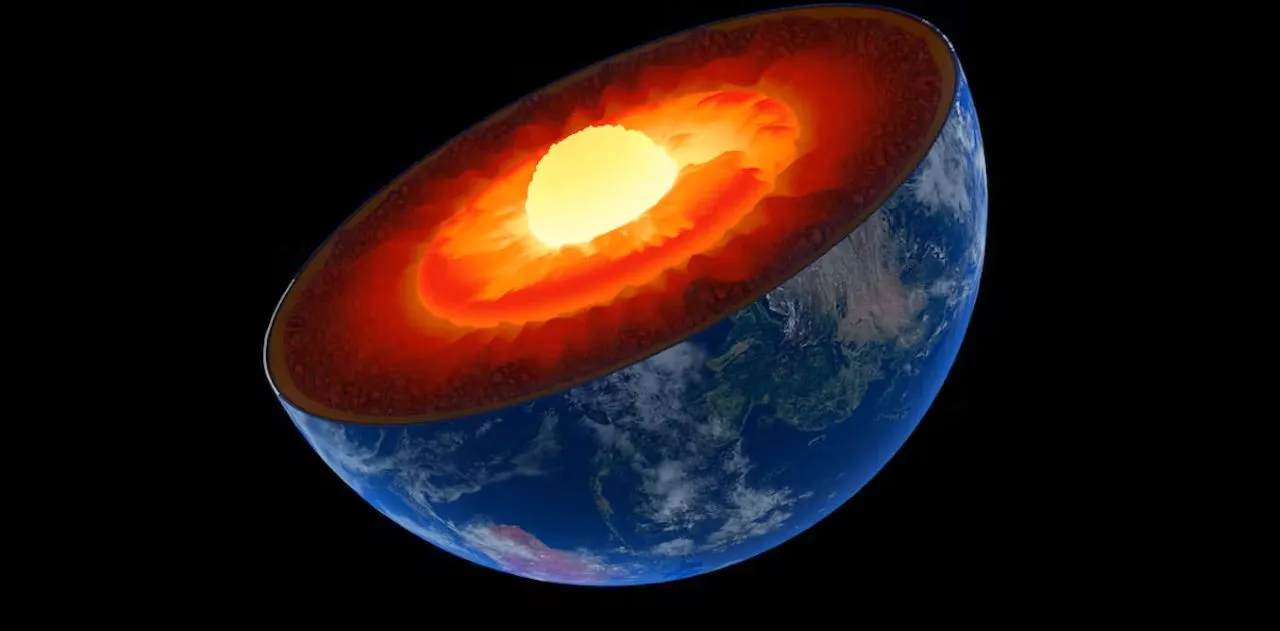What Does Mantle Mean In Science? An In-Depth Explanation
The mantle is one of the major layers making up the interior of the Earth. If you’re short on time, here’s a quick answer: In science, the mantle refers to the very hot, viscous layer found between the Earth’s crust and core.
In this comprehensive guide, we’ll explore the scientific meaning of the mantle in depth. We’ll look at the mantle’s composition, physical properties, convection currents, and role in tectonic movement. We’ll also examine how the mantle influences volcanism, earthquakes, and the geodynamo.
The Mantle’s Composition and Physical Properties
The mantle is a layer of the Earth that lies between the crust and the core. It is primarily composed of solid rock and is the largest layer of the Earth, making up approximately 84% of its volume. The composition of the mantle is predominantly made up of silicate minerals, with the most abundant being olivine, pyroxene, and garnet.
These minerals contain elements such as oxygen, silicon, magnesium, and iron.
Chemical Composition of the Mantle
The chemical composition of the mantle is quite different from that of the Earth’s crust. While the crust is mainly composed of lighter elements like oxygen, silicon, aluminum, and potassium, the mantle consists of denser elements like magnesium, iron, and calcium.
This stark difference in composition is due to the process of differentiation during the formation of the Earth, where heavier elements sank towards the core, while lighter elements rose to form the crust.
The mantle is also rich in volatile elements such as water, carbon dioxide, and sulfur. These volatile elements are believed to be stored in minerals within the mantle and can play a crucial role in processes like volcanic eruptions and the formation of magma.
Physical Characteristics Like Density and Temperature
The mantle has a higher density compared to the Earth’s crust, which gives it the ability to flow slowly over long periods of time. The density of the mantle gradually increases with depth, reaching its highest values near the core-mantle boundary.
This gradual increase in density is due to the compression of the mantle material under the immense pressure from the overlying layers.
The temperature within the mantle also varies with depth. Near the base of the mantle, temperatures can reach up to 4,000 degrees Celsius (7,200 degrees Fahrenheit). However, the mantle is not uniformly heated, as there are variations in temperature caused by factors such as the presence of hotspots or the cooling effect of subducting tectonic plates.
Understanding the composition and physical properties of the mantle is crucial for scientists studying the Earth’s interior and its dynamic processes. It provides insights into phenomena such as plate tectonics, volcanic activity, and the movement of materials within the Earth.
Mantle Convection Currents
What Causes Convection in the Mantle?
The Earth’s mantle is a layer of hot, semi-solid rock that lies beneath the crust. It is primarily composed of silicate minerals and extends from the base of the crust to the outer core. One of the key processes that occur in the mantle is mantle convection.
This refers to the movement of material within the mantle due to the transfer of heat from the core to the surface of the Earth.
Mantle convection is primarily driven by the heat generated from the radioactive decay of elements within the Earth, as well as the residual heat from the planet’s formation. This heat causes the rock in the mantle to become more buoyant and rise towards the surface.
As it rises, it cools and becomes denser, eventually sinking back down towards the core. This continuous cycle of rising and sinking material creates convection currents within the mantle.
It’s important to note that mantle convection occurs over long periods of time, with the movement of material taking place at a rate of centimeters per year. These slow, gradual movements have a significant impact on the Earth’s surface and its geological features.
Effects of Mantle Convection on the Earth’s Surface
The convection currents in the mantle have a profound effect on the Earth’s surface. They play a crucial role in plate tectonics, which is the study of the movement and interaction of the Earth’s lithospheric plates.
As the convection currents move material within the mantle, they also cause the lithospheric plates to move. This movement can lead to the formation of various geological features such as mountains, volcanoes, and oceanic trenches.
For example, when two plates collide, it can result in the formation of a mountain range. Conversely, when two plates separate, it can lead to the formation of a rift valley or a mid-ocean ridge.
The convection currents also play a role in the distribution of heat on the Earth’s surface. As the hot material rises from the mantle, it can create regions of increased heat, which can lead to the formation of hotspots.
These hotspots can give rise to volcanic activity, such as the formation of the Hawaiian Islands.
The Mantle’s Role in Plate Tectonics
The mantle plays a crucial role in the Earth’s plate tectonics, the theory that explains the movement of the Earth’s lithospheric plates. The lithosphere, which comprises the Earth’s crust and the uppermost part of the mantle, is divided into several large and small plates that float on the semi-fluid layer of the mantle called the asthenosphere.
Asthenosphere Allows Tectonic Plate Motion
The asthenosphere is a region in the upper mantle that is partially molten and has a consistency similar to that of toothpaste. It is this semi-fluid nature of the asthenosphere that allows the lithospheric plates to move.
As the plates slowly drift on the asthenosphere, they interact at their boundaries, leading to various geologic phenomena such as earthquakes, volcanic activity, and the formation of mountain ranges.
Did you know? The asthenosphere is located approximately 60 to 250 kilometers below the Earth’s surface and is responsible for the majority of the mantle’s convection currents, which drive the movement of the plates.
The movement of tectonic plates occurs in three main ways: divergent boundaries, where plates move apart; convergent boundaries, where plates collide; and transform boundaries, where plates slide past each other horizontally.
These plate interactions are driven by the convection currents in the mantle. As hot material rises from the deeper parts of the mantle, it creates upward flow, pushing the plates apart at divergent boundaries.
Conversely, at convergent boundaries, where two plates collide, the denser plate is forced beneath the less dense plate in a process called subduction.
How the Mantle Influences Earthquakes and Volcanoes
The mantle is also closely linked to the occurrence of earthquakes and volcanic activity. Most earthquakes are caused by the movement of tectonic plates along faults, which are fractures in the Earth’s crust.
As the plates interact and slide past each other, stress builds up along the fault lines until it is released in the form of an earthquake. The mantle’s convection currents and the movement of the plates play a significant role in the generation of this stress and subsequent release of energy.
Volcanic activity, on the other hand, is closely tied to the presence of molten rock or magma within the mantle. The mantle is the source of the magma that rises to the Earth’s surface through volcanic vents and erupts as lava.
This magma is generated by the partial melting of the mantle rock, which occurs due to the intense heat and pressure within the Earth’s interior.
Fun fact: The Ring of Fire, a major area in the basin of the Pacific Ocean, is known for its intense volcanic and seismic activity. This region is characterized by a large number of active volcanoes and frequent earthquakes, all of which are influenced by the movement of tectonic plates and the associated mantle dynamics.
Other Scientific Significance of the Mantle
Impact on Geodynamo and Earth’s Magnetic Field
Aside from its role in plate tectonics, the mantle also plays a crucial role in the generation of Earth’s magnetic field. The movement of molten iron in the outer core, driven by convection currents, creates a geodynamo effect that generates the planet’s magnetic field.
However, the mantle’s thermal and chemical properties greatly influence this process. The heat transfer from the core to the mantle, along with the density variations caused by different mineral compositions, can affect the convection patterns in the outer core, ultimately impacting the strength and stability of the magnetic field.
According to research conducted by scientists at the University of California, Berkeley, variations in the mantle’s composition can lead to significant changes in the intensity and direction of the magnetic field.
This has important implications for understanding Earth’s dynamic history and its potential impact on climate change, as variations in the magnetic field have been linked to fluctuations in solar radiation and cosmic ray flux, which can affect the Earth’s climate and even the development of life on our planet.
Relevance for Understanding Early Earth Evolution
The mantle is a key player in unraveling the mysteries of early Earth evolution. By studying the chemical composition of rocks that have been brought to the surface through volcanic activity, scientists can gain insights into the composition and conditions of the mantle billions of years ago.
This information is crucial for reconstructing the geological history of our planet and understanding how it has evolved over time.
Research conducted by a team of geologists at the University of Cambridge has shown that the mantle’s composition has changed significantly over the course of Earth’s history. By analyzing samples from different geological periods, they were able to trace the evolution of the mantle’s chemical signature and make inferences about the processes that have shaped our planet.
This research helps us understand how Earth’s interior has evolved and how its different layers, including the mantle, have contributed to the dynamic and ever-changing nature of our planet.
Conclusion
In summary, the mantle is one of the most important parts of the Earth in the eyes of science. Its composition, convection, and interactions with the crust and core reveal valuable insights about our planet’s formation, evolution, and inner workings.
Understanding the mantle provides foundational knowledge across geology, geophysics, volcanology, seismology, and more.







